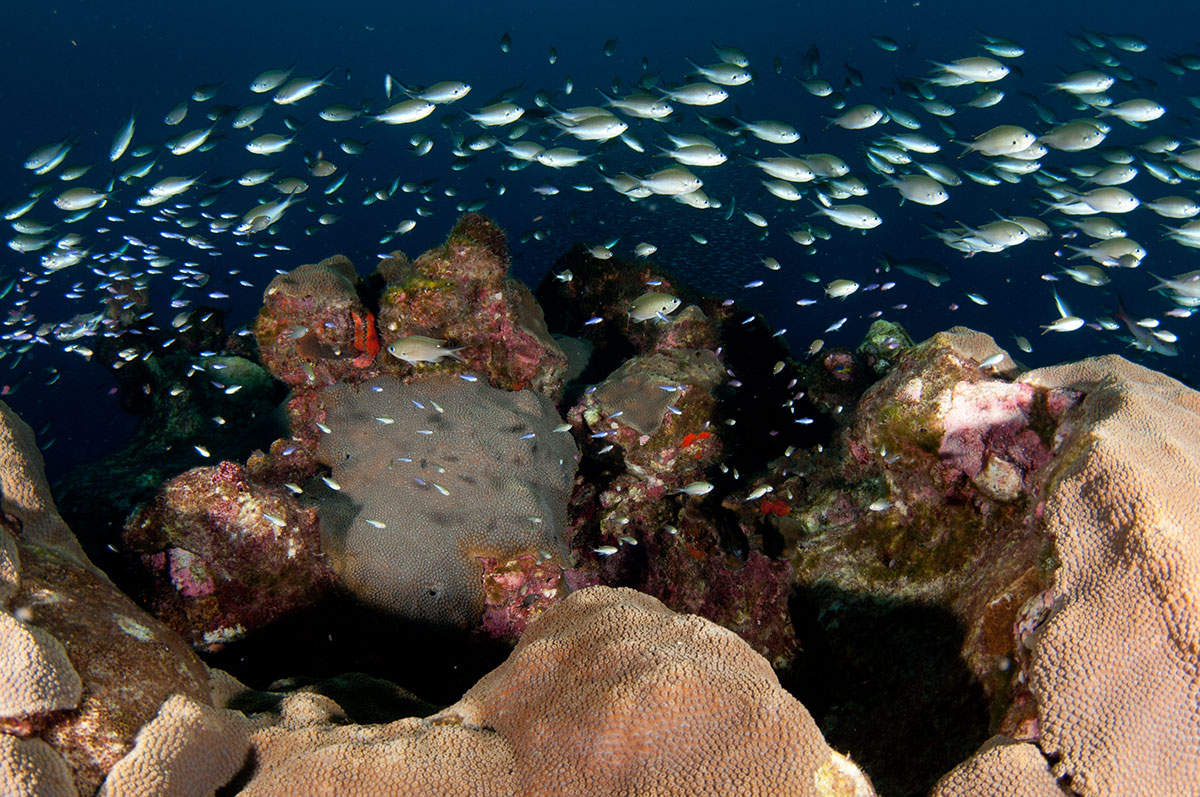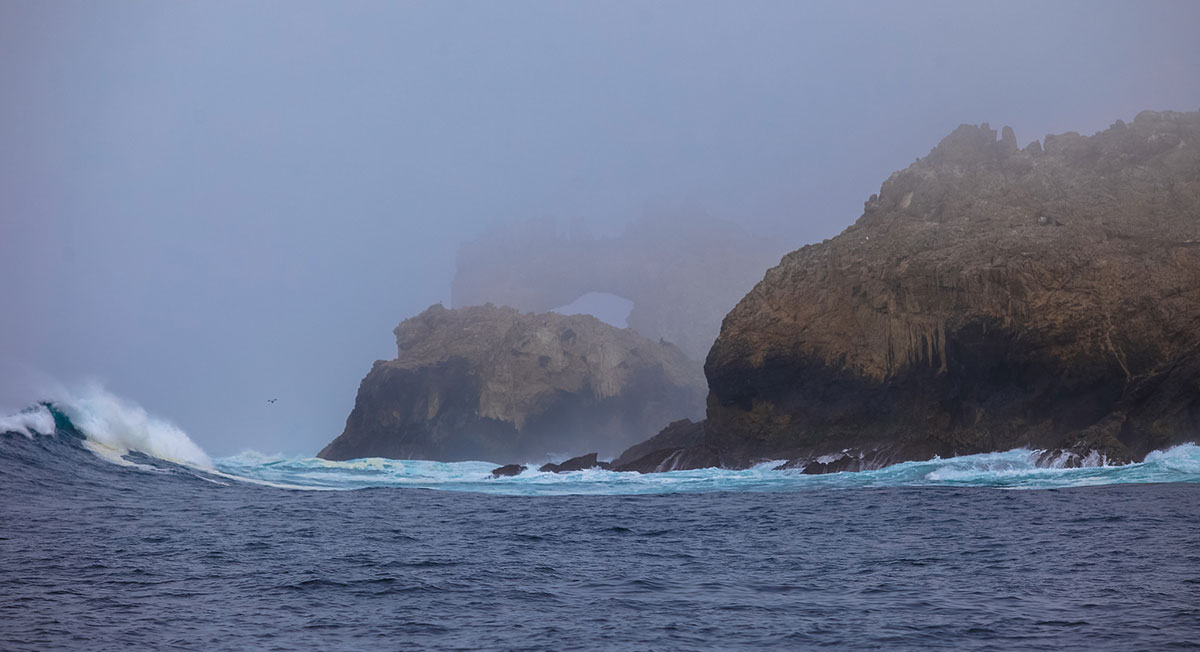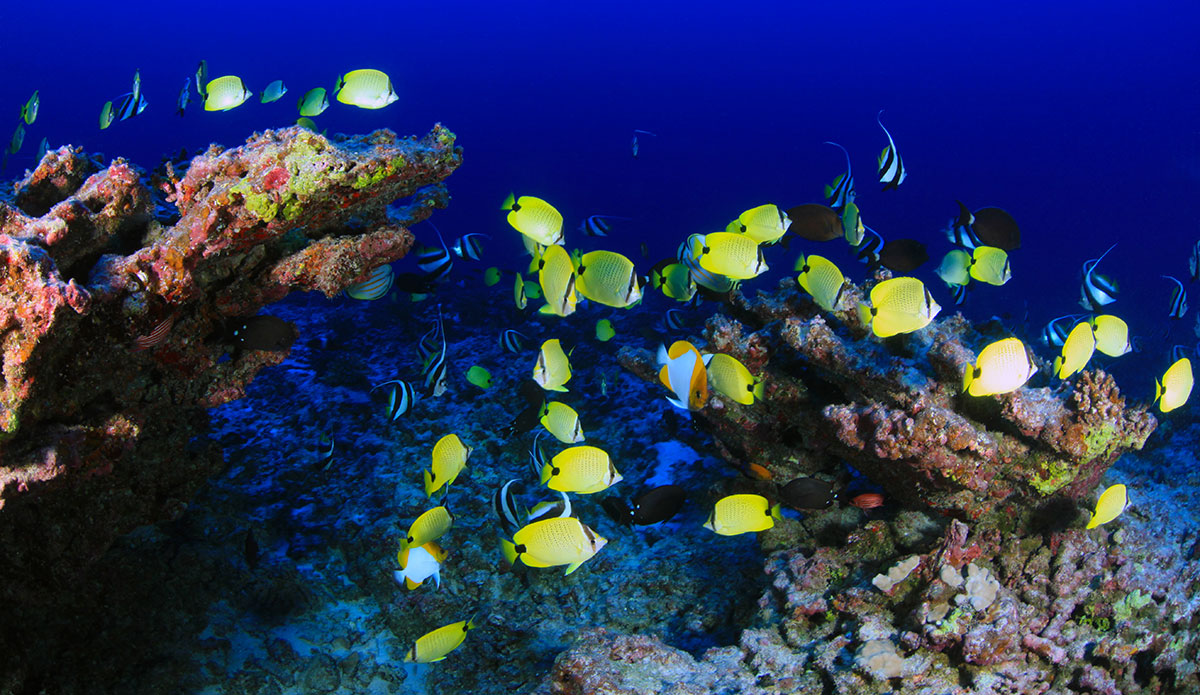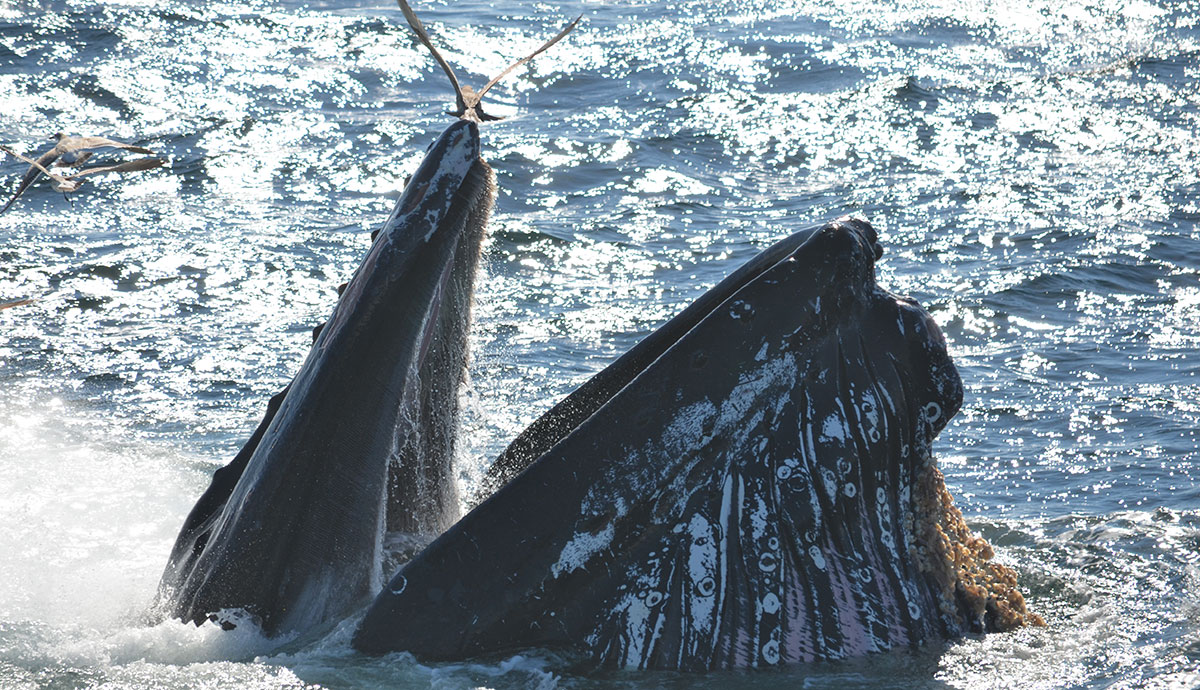14 Reasons to Love Your National Marine Sanctuaries
October 2016

They are full of mysteries.
Humans have only explored an estimated 5 percent of the world's ocean. In fact, we know more about the surface of the moon than our own salty seas! So, while more than 150 historic aircrafts and ships have been reported lost within the waters of Channel Islands National Marine Sanctuary, the remains of just 25 have been discovered. What else might be waiting in your national marine sanctuaries?

They serve as home base to many of the ocean's migrating animals.
Although many marine species migrate throughout the world's ocean, there are unique spots these animals return to regularly each year. One of these is Hawaiian Islands Humpback Whale National Marine Sanctuary, which surrounds the main Hawaiian Islands. More than 10,000 humpback whales winter here, migrating as far as 3,000 miles to Hawai'i to mate, calve and raise their young.

They contain spectacular underwater gardens.
In the 1800's, fishermen in the Gulf of Mexico looked down at a vivid reef they thought looked like lush gardens of flowers. Today, Flower Garden Banks National Marine Sanctuary takes its name from the brightly colored sponges, corals and other marine life that thrive on the salt domes found in the sanctuary. The electric colors of the chromis, creolefish and damselfish are the most common throughout these reefs. With as much as 51 percent of the bottom covered with live coral, Flower Garden Banks National Marine Sanctuary teems with colorful and vibrant life.

They yield "mammoth" finds from prehistoric times.
There have been many interesting findings in the waters of Gray's Reef National Marine Sanctuary, including mammoth fossils and nearby, what is estimated to be a 36,000 year old grey whale jaw bone. Both of these finds, among others, are expanding what scientists know about prehistoric land formation and animal distribution.

They bring diverse cultures together.
On Washington's Olympic Coast, four Native American cultures — the Hoh, Makah and Quileute tribes, and the Quinault Indian Nation — work in close coordination with the U.S. government to preserve their relationships with the ocean. Unique legislation and forums for discussion have allowed Olympic Coast National Marine Sanctuary to support a strong cultural legacy.

They are "supermarkets" for hungry ocean creatures.
Thanks to nutrient-rich water, Cordell Bank National Marine Sanctuary is said to be the albatross capital of the northern hemisphere. These magnificent birds are seasonal visitors to Cordell Bank's waters: satellite tagging methods have shown that they breed and nest in the Hawaiian Islands, thousands of miles away, and then "commute" to Cordell Bank to get food for their young.

They protect the rainforests of the sea.
Huge colonies of massive Porites coral heads grow in the Valley of the Giants in National Marine Sanctuary of American Samoa. These protected colonies are among some of the largest and oldest known corals in the world -- the largest, Big Momma, is more than 500 years old and 6.4 meters high! The waters of National Marine Sanctuary of American Samoa are also extremely diverse: Fagatele Bay alone contains more than 140 known species of coral.

They are safe havens for top predators.
Ever since Jaws, the United States has been obsessed with white sharks, and luckily, Greater Farallones National Marine Sanctuary protects one of the world's largest groups of them. Besides this misrepresented — and entirely important — predator, this sanctuary is also home to more than 25 other threatened or endangered species.

They are incredibly vast.
Papahānaumokuākea Marine National Monument is, at nearly 620,000 square miles, the largest conservation area in the world. That's bigger than the total land area of the state of Alaska! The monument hosts an amazing array of wildlife, from 14 million seabirds that breed and nest within its boundaries, to more than 7,000 species of marine life, one quarter of which are only found in the Hawaiian Archipelago.

They are museums beneath the sea.
Monitor National Marine Sanctuary was designated to protect a very significant artifact: the sunken wreckage of the USS Monitor, a famed Civil War ironclad. Monitor was the first ironclad commissioned by the Union army (and had the first below-the-waterline flush toilet!), and engaged in the first battle between ironclad warships before foundering in a storm. Monitor's wreckage was discovered over a century later off the coast of North Carolina, and became the nation's first national marine sanctuary.

They are as deep as the Grand Canyon.
Underneath the waves, the landscape is just as vibrant as it is above. The territory of Monterey Bay National Marine Sanctuary includes the Monterey Canyon, which has depths comparable to the Grand Canyon. This canyon formed about 21 million years ago and continues to change as the result of oceanographic conditions.

They are full of familiar faces.
Salt, a humpback whale, has used Stellwagen Bank National Marine Sanctuary as her feeding grounds almost every year since being identified and named in 1975, and has brought 14 of her calves with her throughout the years. Scientists have used unique markings on her tail to track whale migratory patterns, and have worked with other nations to establish sister sanctuaries to protect humpback whales.

They protect our nation's maritime history.
The only national marine sanctuary located in fresh water, Thunder Bay National Marine Sanctuary is home to one of America's most extensive and culturally significant collections of shipwrecks. Lake Huron's cold, fresh water has preserved the wrecks of many of the ships that foundered in this "shipwreck alley," each one offering a glimpse into the economic timeline of the United States.

They contribute to the air we breathe.
In addition to the world's third-largest barrier coral reef, Florida Keys National Marine Sanctuary encompasses the largest known seagrass bed in the world, which creatures like the beloved manatee call home. Notably, seagrass serves the function of a carbon storage plant, and seagrass meadows can store up to twice as much carbon as the world's temperate and tropical rainforests, per unit area.
Which national marine sanctuary will you visit next?

